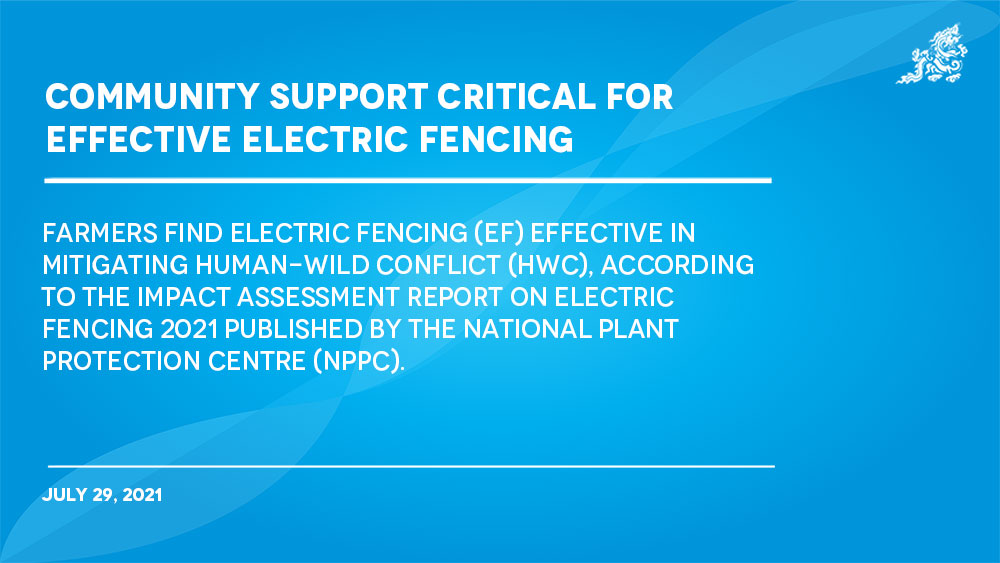Chhimi Dema
Farmers find electric fencing (EF) effective in mitigating human-wild conflict (HWC), according to the Impact Assessment Report on Electric Fencing 2021 published by the National Plant Protection Centre (NPPC).
However, the study pointed out that a substantial amount of crop was lost to wildlife due to non-functional and ineffective EF.
This, according to the report, was due to lack of cooperation in the community in implementing timely maintenance and clearing of vegetation around EF.
The survey was carried out in 17 dzongkhags and 64 gewogs covering 202 households to “assess the effectiveness of electric fencing in reducing crop loss, its technical performance against the wildlife and socio-economic benefits to rural communities.”
The country had 6,484km EF, benefitting 30,526 households in the country as of June.
The government in this fiscal year is to fence farmlands with 1,563km electric and 1,165km barbed wire fencing.
The most common wild animals damaging crops were wild boar, barking deer, sambar, elephant and bear. “[Wild pig] is still the number one vertebrate pest, causing the maximum crop yield loss despite electric fencing,” the report stated.
The report noted that the loss of crops, particularly maize, wheat, potatoes, and vegetables was high.
Before the installation of EF, maize loss was reported at 43 percent which decreased to 11 percent after EF in a year.
Likewise, 33 percent of paddy was lost to wild animals, 31 percent of wheat, 22 percent of potato, and 19 percent of vegetables before EF.
Crop loss decreased to seven percent for paddy, eight percent for wheat, and four percent for potato and vegetables after installation of EF.
It was recorded that farmers lost 192,214.8kg of yield to wild animals in a year. After EF, farmers lost 44,510.7kg of yield.
According to the report, the highest crop damage was caused by wild boar, followed by elephant and monkey.
In a year, wild boars damage yield close to 150,000kg; elephants damage about 15,000kg, and monkeys damage about 12,000kg, according to the report. All accounted before EF.
The report stated that the common problems for non-functional or ineffective EF were due to wrong connections of energiser, earthing system, charge controller, use of rusted galvanised steel wire, and damaged energiser.
The technical team from the NPPC found that 80 percent of EF was functional from the 332km EF in 17 dzongkhags.
A technical official from NPPC said that the common issue for non-functional EF was damaged energiser that converts main or battery into a high voltage pulse.
“EF needs regular and timely maintenance to ensure constant electricity flow,” the official said.
Another factor causing non-functional EF, the official said, was the improper installation of the earthing system. “The current weakens or is lost without a proper earthing system.”
He said that using barbed wire or other physical materials along with EF was not recommended as these materials obstruct the flow of electric current along the fence wires.
Edited by Jigme Wangchuk


